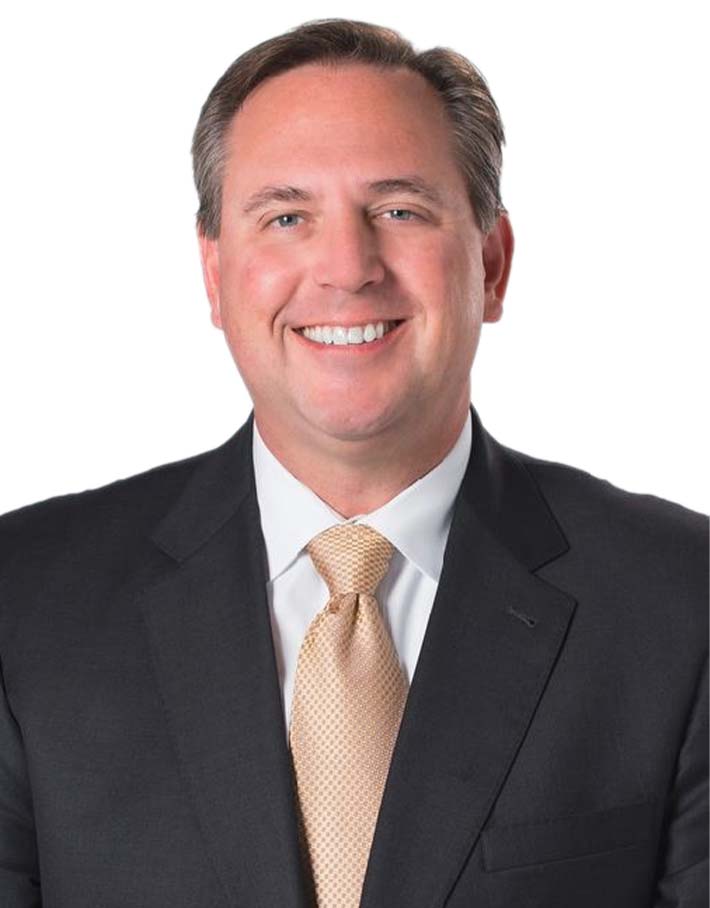FINOP Focus: 2021 Exam Priorities
By Clark Tucker and Robert Hall
Subscribe to our original industry insights
Don’t be one of the findings in next year’s FINRA Exam Priorities report. Join our FINOP and Finance experts Rob Hall, Clark Tucker and Jeff Harpel as they discuss FINRA’s requirements around net capital, liquidity management, credit, risk management, segregation of assets and customer protection.
Additional Reading
Net Capital Requirements – Get the Facts
FINOP Expense Sharing Agreements Best Practices
Get the FINOP Support You Need
Oyster Consulting’s FINOP consultants are leading experts in regulatory net capital requirements and FINOP responsibilities, who can assist in keeping your firm compliant with industry regulations. We can also provide your firm with an outsourced FINOP who understands the industry and your firm but who also has the experience and resources to navigate regulatory nuances and interpretations.
Transcript
Transcript provided by Temi transcript services
Oyster: Welcome to the Oyster Stew podcast, where we discuss what’s happening in the industry based on what we see as we work with regulators and clients. Oyster consultants are industry practitioners; we aren’t career consultants. We’ve done your job and we know the issues you face. You can learn more about Oyster Consulting and the value we can add to your firm by going to our website – oysterllc.com.
Rob Hall: Hi everyone. This is Rob Hall. I’m the CFO of Oyster Consulting. I’m here with Jeff Harpel and Clark Tucker, two of our consultants that do FINOP and CFO work for our clients, so they can be outsourced, or they can help our clients with any projects they may have. We’re actually looking at FINRA’s Examination, Risk Monitoring Program and the report that they sent out in February. Jeff, can you give us an overview?
Jeff Harpel: Sure. Rob, thanks. Yeah. FINRA came out with its 2021 report on FINRA’s Examination and Risk Monitoring Program – quite a title – back in February. There is a section related to financial management, which is probably of most interest to our FINOP clients who are worried about financial regulations, that they cover several topics. They are net capital, liquidity management, credit, risk management, and segregation of assets, and customer protection. We’re not going to cover them all today, but we’ll hit on some items that we think are particularly important and some items that we’ve seen come up. What is particularly interesting to me is that, especially when we start looking at the net capital section, a lot of these items we’ve seen before. They come up year after year which in some ways is surprising because they keep coming up. FINRA keeps calling them out, but they do. To me really means that there’s really an ongoing need for every firm to be diligent and to keep reviewing at least maybe on an annual basis, their process and how they do things, and see what has changed and what hasn’t.
Let me touch on a couple of actual findings under net capital. And then we can talk about them a little more in depth, but the first one they talk about is inaccurate classification of receivables, liabilities, and revenues. What I would call the basic block and tackling of accounting. Getting your receivables classified, recorded and classified correctly, your liabilities accrued correctly, your revenues correct. Because we all know net capital is, is based on gap accounting. And if you get that wrong, you got a problem – a big problem. In that also is the notion of – ‘do you know which of your assets are allowed and which are not, and how have you documented that?’ Another one they talk about is people misunderstanding or misapplying haircuts. And they call out CDs in particular because CDs can not always be what they appear on the surface. And they point out, you really need to look at the documents and figure out what you’ve got to get the right haircut.
They also talk about fail to deliver and receive charges, which for many of our clients don’t apply, but that’s there. Capital charges for underwriting commitments, and making sure you know what your commitments are when they occur. So you can take the capital charge at the point in time when you need to. We all know net capital is a moment-to-moment calculation. So these things need to be done all the time. A really surprising one to me too, is they found a lot of firms using cash accounting instead of accrual accounting. Again, then the capital rules require gap accrual accounting. And the last one which I know is near and dear to Clark’s heart is expense sharing agreements and how firms having insufficient documentation regarding expense sharing agreements. So I might stop there a minute and let Clark talk about expense sharing agreements and what he’s seeing.
Clark Tucker: Thanks, Jeff. Always an exciting topic, I know. But actually you mentioned the word that some of the findings were surprising, and I agree with that completely. I would also add that it’s somewhat disappointing, especially when it relates to something as straightforward as expense sharing agreements. FINRA issued Notice to Members O3-63, now 18 years ago, covering expense sharing agreements. And most of the notice is crystal clear as to what’s expected in them. The broker dealer, if it has a parent or an affiliate, that is providing some shared services, be it rent, or personnel, or equipment, et cetera. Now the broker dealer is still required to properly account for all of its own expenses, and that includes a portion of what was shared. An expense sharing agreement, just kind of confirms that in writing according to the notice to members. The broker dealer has to, it needs to have an, a written agreement with the parent or affiliate or whoever the provider, the third-party provider is.
And there were a few criteria. The expenses have to be fair and reasonable in their determination and then they must be consistently applied. In order to determine fair and reasonable, most firms will look at something like rent and assign a cost driver like a percentage of square footage, and that can typically cover rent and equipment and physical assets. That’s a pretty reasonable driver. For personnel, it might be the time spent. An employee of the parent or affiliate might spend 5%, 10% of their time on a new broker dealer. And so you would apply five or 10% of that person or those people expenses to the broker dealer and then you would record that, of course, monthly. So there would be other requirements on that, meaning that it has to be written. The third party, not just the broker dealer but the third party, has to commit, in writing, to the broker dealer, that the broker dealer is not directly or indirectly liable to any vendor for that expense.
So the parent company signs a lease agreement for office space and the broker dealer is using a portion of it – We’ve talked about how to allocate a portion of that expense – but also the parent is the lessee. And so the broker dealer would not be directly or indirectly responsible for that expense. The parent or the third party is, and the broker dealer must reimburse that third party. So once you’ve worked out those details and written them down, typically on a Schedule A at the end of the expense agreement, we’ve agreed that the broker dealer’s not directly or indirectly responsible to the vendor, that it complies under gap. We would put that into the body of the agreement, and we would also include that in a Schedule A at the end of the agreement. And then where I have seen is typically that intercompany, a payable would need to be resolved at least annually.
It doesn’t have to be done monthly, but if we’re accruing X dollars per month, that were payable to our third-party provider being the parent or affiliate, we need to resolve that periodically. We can do that a couple of ways with a cash payment or forgiveness of the intercompany debt, but the P there is that we need to resolve it on reasonable at time basis. And also both parties need to update that agreement. You know, the fact that we could have signed an agreement in 2013, probably no longer applies now. Personnel costs have certainly changed. Rent may have changed. Other factors go in, so we should review the Schedule A portion at least annually and, if need be, sign a new agreement. If something larger has happened that would, of course, require a re-submission to FINRA, but just updating the Schedule A should be routine process to make sure that it continues to be fair and reasonable in its determination, and that it is still being consistently applied.
With all of those things baked in, if you will, to the expense sharing agreement firms shouldn’t have a problem. Now they can get more complex, but in most of the firms that we’ve seen, there’s no real need to make it much more complex. With larger companies and larger accounting divisions, it can get more complicated with the drivers, et cetera. But for limited purpose firms, or small firms, it really can be this simple. Let’s just come to agreement on what the costs are. Let’s establish drivers, let’s allocate the actual percentages or numbers. And then let’s record that consistently. And then we update it annually and we make sure that we’re still on the same page. And I think if firms will do that, they really should not have any problems with expansion agreements. That’s why I say disappointing, because this is not too overly burdensome for either party.
Rob Hall: Have you seen some of our, maybe our smaller clients, just figure out a 20% across the board of all the expenses, are allocated to the parent or to the broker-dealer?
Clark Tucker: I have seen where some initial versions of expense agreements attempt to do that, but I stress to them that fair and reasonable is not just picking a number from the heavens. It means that we have, we’ve really actually tried to take a realistic look at it and reasonably apply those costs between the two. And that’s why I identified different drivers for different things. Because a new broker dealer, certainly if it’s being layered on top of an existing company, the broker dealer’s not taking 20% of the floor space or office space. And so to allocate 20% of that rent or whatever to the broker dealer would seem to be on the high side to me. And the same with people, different people might spend different percentages of their time on broker dealer business. We have an established business with all of these salaried and well compensated people. Some might spend 10% of their time, some might spend five, some might spend one. And the point is, to try to intelligently review that and then document it appropriately. So I have seen arbitrary – I would say that 20% is arbitrary – I have seen where, as a first pass, firms would opt for that, but I attempt to stress with them that we need to make this as realistic as possible so that we don’t have future problems.
Jeff Harpel: No, I agree with Clark a hundred percent. And I guess I really want to stress, a couple of things he said, I think are really, really important. And one is the notion of reviewing it annually. His example of doing it in 2013 and still assuming it’s good today, that is usually a very bad assumption. I think, yeah, reviewing it every year is the right thing to do. I also think, firms sometimes can do a great expense sharing agreement and then what they actually do is slightly different. So when you do it, make sure you have the processes and procedures to actually do what the agreement says. That’s been, I’ve seen that be a problem. And the same thing as Clark said with paying it off, they might say in the agreement, we’re going to play at monthly and then don’t, or they’re going to pay it annually, and all of a sudden they’re paying it monthly. Just do what it says. And if you want to change the procedure, change the agreement too. It’s not that hard. So I just wanted to emphasize those, those couple of things that I’ve seen go wrong.
Clark Tucker: And Jeff, I’m really glad you said that because in the decades that I’ve been in this business, one of the common FINRA findings that I have seen repeatedly through many firms is that the rules say one thing and that constricts us and the broker dealers on the outer bounds of what’s acceptable. The SEC, FINRA, states, et cetera, come up with the outer boundaries. But then the firms through its written supervisory procedures and its agreements constrict that into, within the rules, here’s what we commit to doing. And one of these common findings that I see, and we’ve all seen this, is that FINRA will do an examination and they’ll come in and they’ll say, yeah, you’re not outside the rules, but you’re violating your own written supervisory procedures and. Or you’re not honoring your own contracts, and, therefore, that’s a finding. It’s very simple to write down something that’s agreeable and then honor it. And that’s why I kind of circled back to the term, at least annually. It could be more often, but we don’t want to go beyond the outer bound that we put on ourselves. And so we can settle quarterly if we wish, but we’ve committed to doing it at least annually. And so if that’s something we want to pursue, then we do. But we have to follow the self-imposed limitations that we placed through our procedures and through our agreements.
Jeff Harpel: I think we’ve all seen that happen. The finding isn’t a rule to find is, yeah, you didn’t do what you said you were going to do. And it’s so simple, the effects. I mean, I think all these things lead us to one of the items in the report and they start talking about effective, next effective practices. And this is something I think we at Oyster have talked about a lot. But that’s just the simple notion of performing an assessment, maybe annually, maybe more often if your firm’s business model changes in some way. Of your process, don’t get into a rut. Check your processes, make sure you know how you are calculating that capital, how you are treating your assets as allowed or not. Make sure nothing has changed from year to year. And make sure, and we say this all the time, that you document everything and document it some more. Because it doesn’t count if it’s not documented. And that’s one of FINRA’s points. Just do that and you can find and avoid and fix many of these issues. Same thing.
And they also talk about training. Some of this is, we all know there’s turnover. New people come in. Institutional knowledge is lost. You know, there’s always sort of that need to retrain. To make sure everybody really does know what they’re supposed to be doing. So that the procedures that Clark talked about, have your written supervisory procedures, you are actually doing them the way you wrote them and ongoing training makes perfect sense. We had Oyster talk about that a lot. I mean, both of those things we can help you with if need be, but that’s something very, very important. We’re not really talking about liquidity management or credit risk management, but one thing that did catch my eye is in the segregation of assets and customer protection, they note that this particularly applies to introducing firms.
They had a lot of findings related to promptly forwarding checks. You know, the rule is pretty simple. You’ve got to do it by noon the next day. You’ve got to record everything – when you got it in, when you got it out, and any exceptions. And that’s really important, one to maintain your exemption, and what you have to report on your exemption report. It seems sort of surprising these rules have been around for so long and that’s still a problem. But if you are an introducing firm, make sure you got those procedures down cold also, because that’s one they’re looking at. So I just wanted to mention that one too. Right?
Rob Hall: Thanks Jeff, Clark. You have any last comments before we sign off?
Clark Tucker: Surprisingly? No, I will stop talking at this point.
Rob Hall: All right. Sounds good. All right. Well, thanks for listening our podcast and we are here at Oyster. Feel free to give us a call or send us an email and we’re happy to help.
Oyster: Thanks for listening. And if you like what you heard, make sure to follow the Oyster Stew podcast on whatever platform you listen to. If you’d like to learn how we can help firms start, run, protect, and grow their business, visit our website – oysterllc.com.



